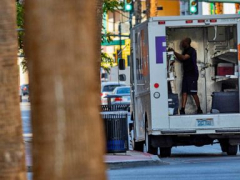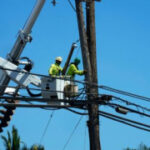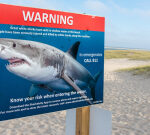RENO, Nev. — Santos Brizuela spent more than two decades laboring outdoors, persisting despite a bout of heatstroke while cutting sugarcane in Mexico and chronic laryngitis from repeated exposure to the hot sun while on various other jobs.
But last summer, while on a construction crew in Las Vegas, he reached his breaking point. Exposure to the sun made his head ache immediately. He lost much of his appetite.
Now at a maintenance job, Brizuela, 47, is able to take breaks. There are flyers on the walls with best practices for staying healthy — protections he had not been afforded before.
“Sometimes as a worker you ask your employer for protection or for health and safety related needs, and they don’t listen or follow,” he said in Spanish through an interpreter.
A historic heat wave that began blasting the Southwest and other parts of the country this summer is shining a spotlight on one of the harshest, yet least-addressed effects of U.S. climate change: the rising deaths and injuries of people who work in extreme heat, whether inside warehouses and kitchens or outside under the blazing sun. Many of them are migrants in low-wage jobs.
State and federal governments have long implemented federal procedures for environmental risks exacerbated by climate change, namely drought, flood and wildfires. But extreme heat protections have generally lagged with “no owner” in state and federal governments, said Ladd Keith, an assistant professor of planning at Arizona State University.
“In some ways, we have a very long way to catch up to the governance gap in treating the heat as a true climate hazard,” Keith said.
There is no federal heat standard in the U.S. despite an ongoing push from President Joe Biden’s administration to establish one. Most of the hottest U.S. states currently have no heat-specific standards either.
Instead, workers in many states who are exposed to extreme heat are ostensibly protected by what is known as the “general duty clause,” which requires employers to mitigate hazards that could cause serious injury or death. The clause permits state authorities to inspect work sites for violations, and many do, but there are no consistent benchmarks for determining what constitutes a serious heat hazard.
“What’s unsafe isn’t always clear,” said Juanita Constible, a senior advocate from the National Resources Defense Council who tracks extreme heat policy. “Without a specific heat standard, it makes it more challenging for regulators to decide, ‘OK, this employer’s breaking the law or not.’”
Many states are adopting their own versions of a federal “emphasis” program increasing inspections to ensure employers offer water, shade and breaks, but citations and enforcement still must go through the general





